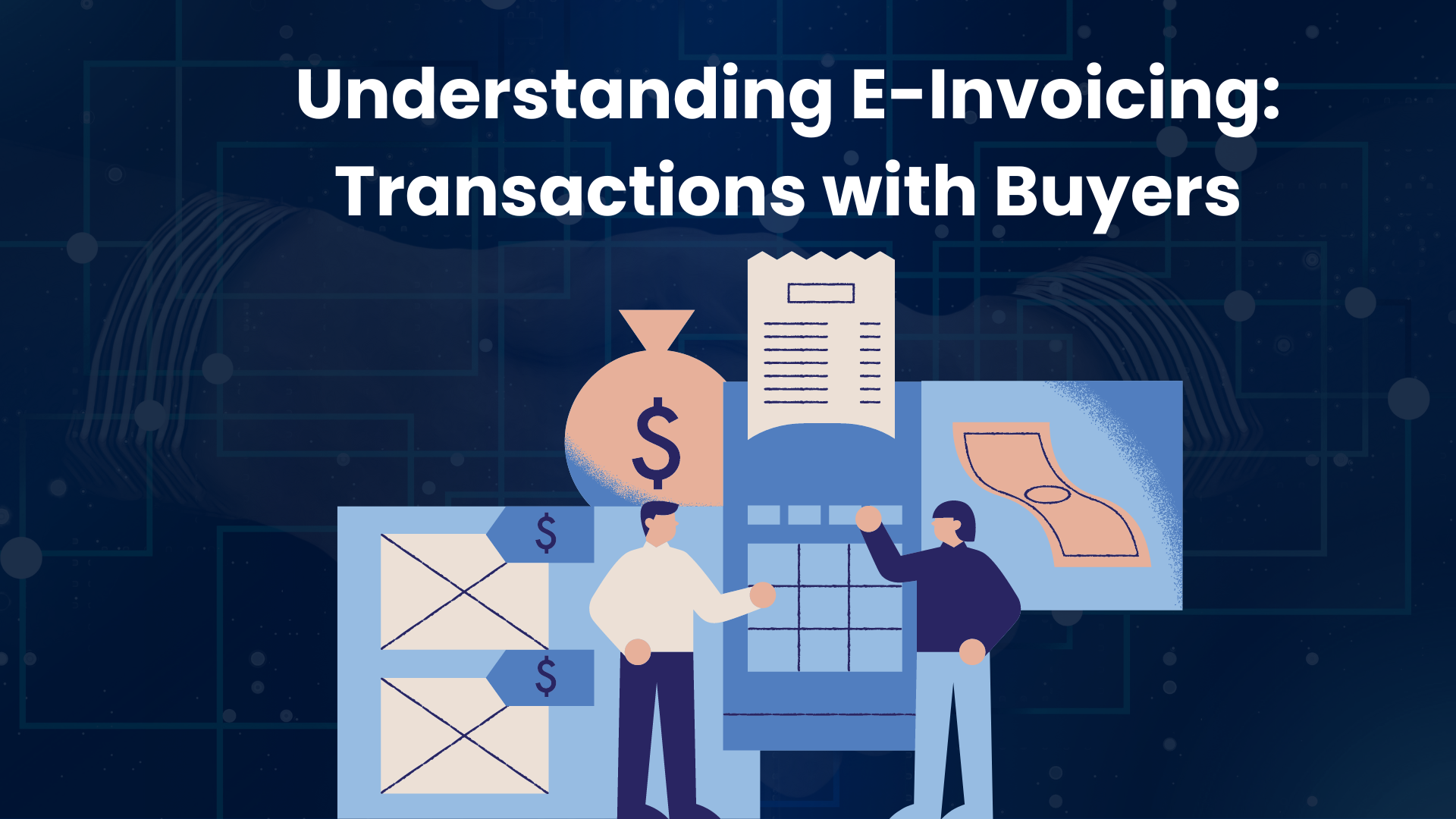-
Sep, Thu, 2024
Understanding E-Invoicing: Transactions with Buyers
Introduction
In the evolving landscape of business transactions, the introduction of e-Invoicing brings new requirements for Suppliers. Currently, transactions are documented through receipts, bills, or invoices provided in hardcopy or electronically (e.g., via email). With the shift to e-Invoicing, Suppliers are now required to issue e-Invoices for all transactions.
However, not all Buyers may need an e-Invoice. To streamline this process and reduce the administrative burden on both Suppliers and Buyers, the IRBM permits Suppliers to consolidate transactions with Buyers who do not require an e-Invoice into a single monthly e-Invoice.
Graphic Overview:
The graphic below illustrates two scenarios for handling transactions with Buyers:
-
- Scenario 1: Buyer Requests an E-Invoice
-
- Scenario 2: Buyer Does Not Require an E-Invoice

Note: This graphic is based on information from the LHDN’s e-Invoicing Guidelines.
Scenario 1: Buyer Requests an E-Invoice. We’ll cover the steps involved, the necessary fields for the e-Invoice, and provide an example to ensure you understand how to comply with this requirement.

Scenario 1 : Buyer Requests an E-Invoice
1. Request for E-Invoice:
If a Buyer needs an e-Invoice for a transaction, they should let the Supplier know by making a request.
2.Collecting Buyer’s Details:
Once the Supplier gets the request, they need to gather specific details from the Buyer.
3. Issue the E-Invoice:
Once the Supplier has collected the necessary details from the Buyer, they can proceed to issue the e-Invoice. Below are the steps to issue the E-Invoice.
Steps To Issue the E-Invoice
Step 1: Confirm with the Buyer if they indeed need an e-Invoice.
Step 2: If the Buyer confirms, they must provide the necessary details to the Supplier to complete the e-Invoice
Step 3: The Supplier fills out the remaining fields as specified in Appendices 1 and 2 of the e-Invoice Guidelines and issues the e-Invoice.
Step 4: Once validated, the e-Invoice serves as the Buyer’s official proof of expense for tax purposes.
Note: For detailed guidelines, refer to Table 3.1 and Appendices 1 and 2 in the e-Invoice Guidelines .
Details and Fields to be Provided by the Supplier for Issuing an E-Invoice
Real Life Scenario:
Mr. Adam (Buyer) bought a laptop from Tech Innovations Ltd. (Supplier) for RM1,200 and requested an e-Invoice.
Tech Innovations Ltd. asked Mr. Adam for his personal details to issue the e-Invoice. Mr. Adam provided all the necessary details, including his identification number, but did not provide his Tax Identification Number (TIN).
Even without Mr. Adam’s TIN, Tech Innovations Ltd. was able to issue the e-Invoice. Once Mr. Adam receives the validated e-Invoice, he can use it as proof of expense for tax purposes.
What’s Next?
In the next post, we’ll explore Scenario 2: When the Buyer Does Not Require an E-Invoice. We’ll discuss how Suppliers can manage such transactions and the steps to consolidate them into a single e-Invoice. Stay tuned for a detailed guide on how to streamline your invoicing process efficiently!


